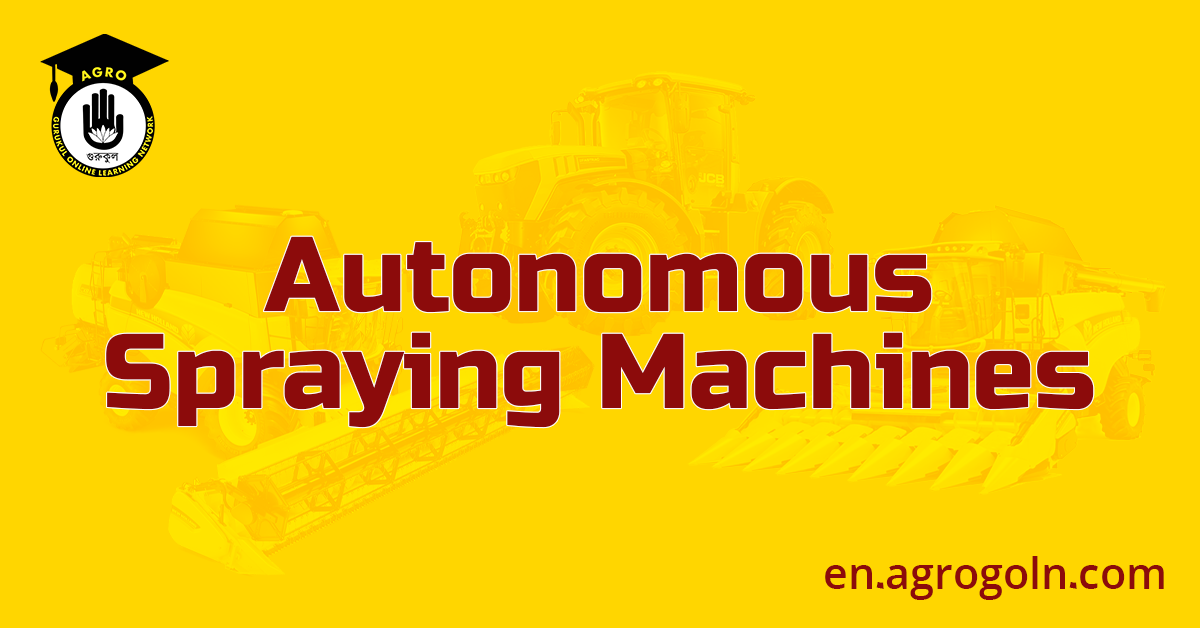Agriculture is the backbone of our society, providing food, fibers, and various raw materials. To meet the ever-increasing demands of a growing global population, farmers must optimize their productivity while ensuring sustainable practices. Crop protection is a crucial aspect of agriculture, aiming to control pests, diseases, and weeds to safeguard crop yields and quality. In recent years, the introduction of autonomous spraying machines has transformed the landscape of crop protection, offering innovative solutions to optimize efficiency, reduce resource consumption, and minimize environmental impacts.
The Need for Efficient Crop Protection
Crop protection has been a constant challenge for farmers throughout history. Traditional methods such as manual labor or tractor-based spraying have precision, uniformity, and time efficiency limitations. Additionally, the use of chemical pesticides can pose risks to human health and the environment if not applied correctly. As agricultural lands expand and climate change alters pest dynamics, the need for efficient and sustainable crop protection becomes increasingly urgent.
The Emergence of Autonomous Spraying Machines
The advent of autonomous spraying machines represents a significant advancement in precision agriculture. These cutting-edge devices combine robotics, artificial intelligence, and remote sensing technologies to autonomously navigate fields and apply crop protection products with unparalleled accuracy.
1. Precision Farming and Sensor Technologies
Autonomous spraying machines leverage precision farming techniques to optimize the use of inputs and minimize waste. Equipped with a wide array of sensors, these machines can detect variations in soil conditions, crop health, and pest infestations. By analyzing this data in real-time, they can precisely apply pesticides, herbicides, or fertilizers only where they are needed, reducing the overall quantity of chemicals used.
2. GPS and Satellite Navigation
Global Positioning System (GPS) and satellite navigation technologies play a pivotal role in the autonomous operation of these machines. Highly accurate GPS systems enable the machines to follow pre-defined paths or adapt dynamically to changing field conditions. This ensures that every square meter of the field is covered efficiently, reducing overlapping and unnecessary spraying.
3. Artificial Intelligence and Machine Learning
The incorporation of artificial intelligence (AI) and machine learning algorithms enables autonomous spraying machines to make informed decisions based on real-time data and historical trends. The machines can identify crop diseases, pests, and weeds with high accuracy, selecting the appropriate treatment and dosage accordingly. Over time, the machines’ capabilities improve as they learn from previous experiences and optimize their decision-making processes.
4. Reduced Human Intervention
One of the primary advantages of autonomous spraying machines is the reduction in human labor and operator intervention. Once programmed and initiated, the machines can work tirelessly day and night, adapting to varying weather conditions and field terrains. This reduces the reliance on manual labor and allows farmers to focus on other critical tasks, enhancing overall operational efficiency.
Benefits of Autonomous Spraying Machines
The integration of autonomous spraying machines into crop protection practices offers a multitude of benefits, positively impacting farmers, consumers, and the environment:
1. Precision and Cost-effectiveness
Autonomous spraying machines precisely apply crop protection products only where needed, reducing wastage and unnecessary chemical use. This level of precision translates to cost savings for farmers while ensuring effective pest and disease control.
2. Environmental Sustainability
By minimizing chemical usage, autonomous spraying machines contribute to environmental sustainability. The reduction in chemical runoff and drift helps protect nearby water bodies and ecosystems, promoting biodiversity and ecological balance.
3. Enhanced Crop Health and Quality
The timely and accurate application of crop protection products by autonomous machines helps maintain crop health and quality. By addressing pest and disease pressures proactively, farmers can achieve better yields and healthier produce.
4. Reduced Human Exposure to Chemicals
As autonomous machines take over spraying operations, human exposure to potentially harmful chemicals is reduced. This safeguards the health and safety of farmworkers and surrounding communities.
5. Improved Farm Efficiency
The autonomous nature of these machines means that crop protection activities can be conducted 24/7, optimizing farm efficiency and increasing the area covered per day. This is particularly beneficial during critical periods such as pest outbreaks or disease epidemics.
Challenges and Limitations
Despite the remarkable advantages of autonomous spraying machines, several challenges and limitations exist:
1. Initial Investment Cost
The initial investment cost for acquiring autonomous spraying machines can be significant. While the long-term benefits may outweigh the cost, small-scale farmers might find it challenging to afford such technology.
2. Technical Expertise
Effective operation and maintenance of autonomous machines require a certain level of technical expertise. Farmers may need training and support to ensure optimal performance and maximize the benefits of these devices.
3. Regulatory Framework
The introduction of autonomous spraying machines has prompted discussions about regulations and safety standards. Governments and regulatory bodies need to address concerns related to liability, safety protocols, and environmental impacts.
4. Limited Application Scope
Currently, autonomous spraying machines are primarily used in large-scale, row-crop agriculture. Adapting these technologies for smallholder farmers and specialty crops remains a challenge due to variations in field sizes and terrains.
Conclusion
Autonomous spraying machines represent a transformative step in the realm of crop protection machinery. By combining precision farming, artificial intelligence, and GPS technologies, these devices offer unparalleled efficiency, sustainability, and effectiveness in pest and disease control.
As the agricultural sector grapples with the pressures of a growing population, climate change, and limited resources, the integration of autonomous spraying machines presents a promising solution to optimize crop protection practices. However, to fully realize the potential of this technology, stakeholders must address challenges related to affordability, technical knowledge, and regulatory frameworks.
In the coming years, continued research, development, and collaboration among technology providers, agricultural researchers, and policymakers will pave the way for a future where autonomous spraying machines play a pivotal role in sustainable and efficient crop protection. This technological revolution has the potential to not only benefit farmers and consumers but also contribute to a greener and more sustainable agriculture sector for generations to come.
